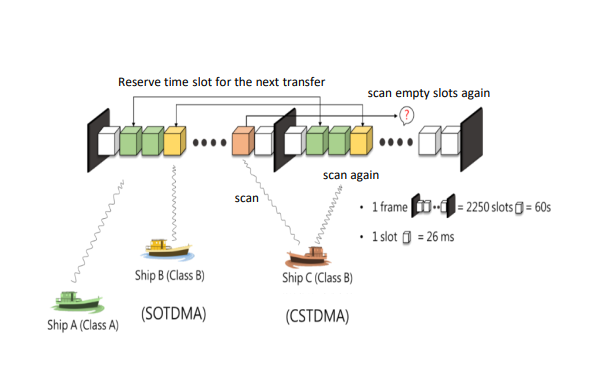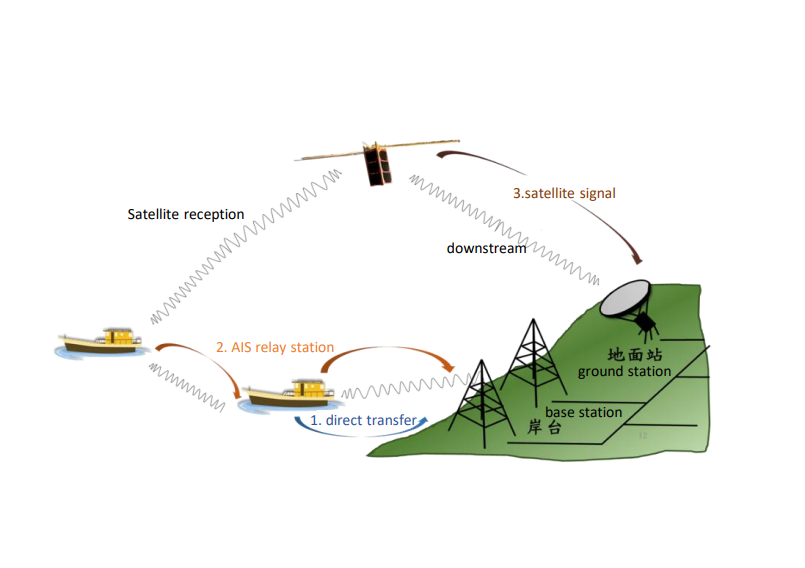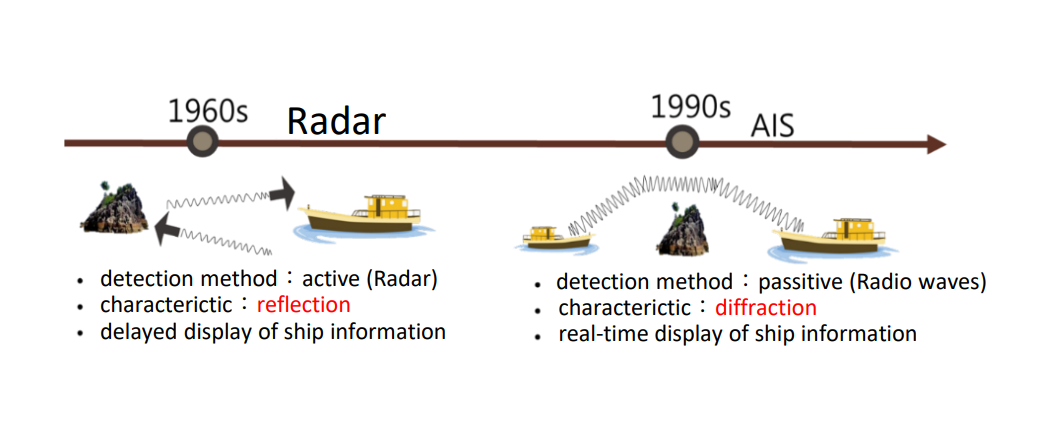
Figure 1. AIS communication transmission

Figure 2. Introduction to the data sending and receiving of AIS ships, land and satellites

Automatic Identification System (AIS) is a maritime information exchange and identification system commonly used between ‘ships and ships’ and ‘ships and shore stations’.
In 2004, the International Convention for the Safety of Life at Sea (SOLAS) requires that “all cargo ships of 300 gross tonnage and upwards engaged on international voyages”, “cargo ships of 500 gross tonnage and upwards not engaged on international voyages” and “all passenger ships irrespective of size” must be equipped with AIS.
AIS includes a variety of transceiver equipment installed on land, ships, and satellites. It uses Global Positioning System (GPS) and Very High Frequency (VHF) radios to transmit ship-specific information to nearby ship's and shore station's automatic reporting systems.
The AIS system receives the dynamic, static and voyage-related information sent by the ship, such as ship name, call sign/MMSI, ship type, position, course to the ground, sailing status, destination and estimated time of arrival, number of people on board, etc.
In addition to broadcasting sea conditions and danger warning areas, AIS can also be combined with a maritime radar to avoid collisions in marine traffic, track marine pollution, predict marine trajectories, and calculate appropriate approach speed for landing, so as to effectively manage ships entering and leaving the port.



Committed to the development of marine smart ports and transportation technology, as well as 3D modeling research on unmanned systems in fishing ports and reservoirs, using automatic ship identification systems and underwater sonar scanning technology to achieve sea area use management. Research on global ship dynamic tracking and monitoring and investigation of underwater terrain changes.
In response to the trends and norms of the world's scientific and technological trends, with the vision of using smart technology in marine fisheries, combined with our school’s excellent teaching and research resources and technologies, aiming at coastal fisheries, pelagic fisheries, fishery meteorology, and fishery management to conduct research in other aspects, and hope to achieve the goal of sustainable use of resources.
Focus on the research of cubic satellites, digital communication systems and space telemetry, and develop and design sea area monitoring systems that use cubic satellites to carry optical lenses and automatic ship identification systems to create a global new world synchronized with the world The generation of maritime satellite communication system can effectively monitor the dynamics of ships throughout Taiwan and the world, and improve the safety analysis of maritime navigation and the identification rate of ships in distress at sea.
To study the development of hydrogen fuel as a green energy and energy storage system to replace the electricity generated by the current use of fossil fuels by ordinary and unmanned vehicles, which can reduce air pollution emissions and carbon dioxide's environmental impact The impact of this, combined with Taiwan’s coastal wind energy units, has created a green energy environment in my country, which promotes the source of electricity to meet higher economic benefits and achieve the vision of sustainable operation.
It is dedicated to the research of smart transportation systems in the ocean, harbor and coastal areas, and uses artificial intelligence, unmanned vehicles, block chain and other Intelligent technologies to make adjustments through training and new data. At the same time, it uses Big Data to analyze and forecast, and carry out effective sea area management or emergency accident prevention.
Based on the technology framework of Cyber-physical System (CPS), the Internet of Things (IoT) Technology Group integrates multiple IoT sensing technologies such as RFID, WSN, 5/6G, edge computing, cloud big data exploration, blockchain, multi-dimensional geographic information platform, and decentralization AI to bridge the physical and virtual world to realize the "digital twin" design standard, and use the "digital twin" to facilitate the development of various system engineering standards related to remote monitoring, telemetry, and preventive maintenance. Adopting the aforementioned advanced technologies, the IoT Technology Group further studies and develops various AIoT systems regarding smart ports, smart shipping, intelligent unmanned vehicles, smart transportation and logistics, and green supply chain related applications.